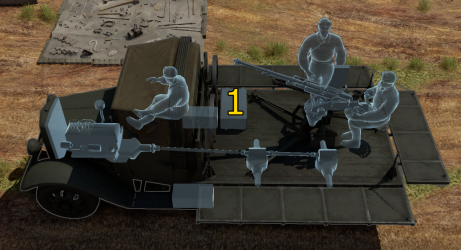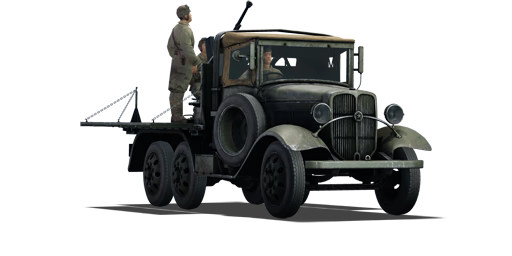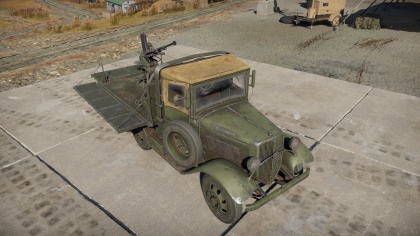Difference between revisions of "Type 94"
Inceptor57 (talk | contribs) |
(→History) |
||
| Line 206: | Line 206: | ||
== History == | == History == | ||
''Describe the history of the creation and combat usage of the ground vehicle in more detail than in the introduction. If the historical reference turns out to be too big, take it to a separate article, taking a link to an article about the vehicle and adding a block "/historical reference" (example: https://wiki.warthunder.com/Name-vehicles/historical reference) and add a link to it here using the <code>main</code> template. Be sure to include links to sources at the end of the article.'' | ''Describe the history of the creation and combat usage of the ground vehicle in more detail than in the introduction. If the historical reference turns out to be too big, take it to a separate article, taking a link to an article about the vehicle and adding a block "/historical reference" (example: https://wiki.warthunder.com/Name-vehicles/historical reference) and add a link to it here using the <code>main</code> template. Be sure to include links to sources at the end of the article.'' | ||
| + | |||
| + | The Isuzu Type 94 truck is a Japanese designed truck which was specifically built for military use. Intended to replace civilian designs, it was originally developped in 1933 as part of an Imperial Japanese Army program to sponsor independent motor companies. Unlike its civilian predecessors, these trucks were designed from the outset to be used on rough terrain. | ||
| + | |||
| + | Isuzu's prototype of a 6x4 truck, known in-house as the Isuzu TU10, was first shown to the army in July of 1933. Not only did it have excellent off-road capabilities thanks to its high ground clearance, but it was also very easy to maintain and reliable in use. Originally the type was fitted with an upright 6 cylinder watercooled engine almost identical to that used on the Isuzu Type 93 six-wheeled civilian passenger car, but adapted for military use. It was capable of developping 43 hp at 1500 rpm or a maximum of 68 hp at 2800 rpm: this version was known as the Type 94 Ko. Later on in 1939 the DA40, a 6 cylinder diesel engine was developed for this truck with similar power output but a lower fuel consumption: this version was known as the Type 94 Otsu. | ||
| + | |||
| + | Army trials of the TU10 prototype started in July of 1933, consisting of six different tests in diverse sets of terrain and weather, spread out between July of 1933 and July of 1934. Following the completion of these tests, the type was officially adapted for use by the Imperial Japanese Army as the Type 94. Standardised sets of plans were drawn up by the Army Engineering Headquarters, and full scale production of the Type 94 started in 1937. | ||
| + | |||
| + | The standard Type 94 truck was designed to be operated by a single driver, and could carry either up to 12 passengers - two in the cab, 10 in the cargo bay - or up to 1300 kg of cargo. Over the course of its production, numerous variants were designed, including the TX40 gasoline-powered civilian 4x4 truck, the Type 97 military 4x4 truck based on the civilian TX40; the TX50 diesel-powered version of the TX40, the TX80 and TU80 with an improved axle strength to increase its maximum payload, as well as various other and specialised variants. | ||
| + | |||
| + | Among these many variants was the '''Type 98 20 mm Machine Cannon Carrier Truck''', which was a ''Type 98 20 mm AA machine cannon'' mounted on the back of a truck as a means to provide AA cover for the IJA's tank divisions. In practice, not solely the Isuzu Type 94 was used, but also equivalent trucks built by Nissan and Toyota. | ||
| + | |||
| + | The Type 98 20 mm AA machine cannon was a Japanese derived variant of the Hotchkiss M1929 13.2 mm machine gun, which had first been developped in 1929 by the French manufacturer Hotchkiss & Cie. Examples of the M1929 were purchased by Japan in the early 1930s, who first started license-building it as the Type 93 machine gun. Experience with the Type 93 and its derived variant, the Type 96 25 mm AT/AA gun, eventually led to a 20 mm variant which was standardised in 1938. This weapon became the most widely spread Japanese light AA gun of the Second World War, with approximately 2500 built. A variant of the Type 98, the Type 4, was introduced in 1944, consisting of two Type 98 guns on a twinned mount. An approximate 500 Type 4 guns were built between 1944 and 1945. | ||
== Media == | == Media == | ||
Revision as of 13:36, 21 October 2019
Contents
Description
The Isuzu Type 94 is a Rank I Japanese self-propelled anti-aircraft vehicle
with a battle rating of 1.3 (AB/RB/SB). It was introduced in Update 1.65 "Way of the Samurai" along with the rest of the Japanese Ground Forces Tree.
As with any truck AA, this vehicle is fragile and should not be taken near the frontline, even though it is potent as a frontline automatic antitank gun.
As a truck chassis, with only 3 crew members, this vehicle has no survivability. Only one thing may save this truck in some situations: cabin's back is 15 mm thick, this can block MG fire. The vehicle has six wheels and a good HP ratio, very fast on road but bad off road; overall with a good reverse speed. Overall, the Type 94 is a gun platform. With 20 bullets, 45 mm of max penetration, a good traverse speed and reload rate, this gun will shred planes and light targets alike. Plus, the same gun is mounted on the two next Japanese SPAAs, offering a good introduction to this main weapon.
General info
Survivability and armour
Armour type:
- Structural steel
- Wood
| Armour | Front | Sides | Rear | Roof |
|---|---|---|---|---|
| Driver's cabin | 1 mm | 15 mm | 15 + 5 mm | N/A |
| Truck bed | N/A | N/A | N/A | 15 mm |
Notes:
- Wheels provide 2 mm thickness each.
- Gunner is extremely exposed, with the only meaningful armour being below the crew member.
Mobility
| Mobility characteristic | ||
|---|---|---|
| Weight (tons) | Add-on Armor weight (tons) |
Max speed (km/h) |
| 5.3 | N/A | 65 (AB) |
| 60 (RB/SB) | ||
| Engine power (horsepower) | ||
| Mode | Stock | Upgraded |
| Arcade | 99 | 122 |
| Realistic/Simulator | 62 | 70 |
| Power-to-weight ratio (hp/ton) | ||
| Mode | Stock | Upgraded |
| Arcade | 18.68 | 23.02 |
| Realistic/Simulator | 11.70 | 13.21 |
Armaments
| 20 mm Type 98 | |||||
|---|---|---|---|---|---|
| Capacity (Belt capacity) | Fire rate (shots/minute) |
Vertical guidance |
Horizontal guidance |
Stabilizer | |
| 400 (20) | 300 | -9°/+82° | ±180° | N/A | |
| Turret rotation speed (°/s) | |||||
| Mode | Stock | Upgraded | Prior + Full crew | Prior + Expert qualif. | Prior + Ace qualif. |
| Arcade | 20.8 | 28.8 | 35.0 | 57.3 | __.__ |
| Realistic | 20.8 | 24.5 | 29.8 | 32.9 | 35.0 |
| Reloading rate (seconds) | |||||
| Stock | Prior + Full crew | Prior + Expert qualif. | Prior + Ace qualif. | ||
| 3.9 | 3.4 | 3.2 | __.__ | ||
Ammunition
| Penetration statistics | |||||||
|---|---|---|---|---|---|---|---|
| Ammunition | Type of warhead |
Penetration in mm @ 90° | |||||
| 10m | 100m | 500m | 1000m | 1500m | 2000m | ||
| Type 100 HE-T | HEFI-T | 2 | 2 | 2 | 2 | 2 | 2 |
| Type 100 AP-T | API-T | 46 | 45 | 33 | 23 | 15 | 11 |
| Shell details | ||||||||||
|---|---|---|---|---|---|---|---|---|---|---|
| Ammunition | Type of warhead |
Velocity in m/s |
Projectile Mass in kg |
Fuse delay
in m: |
Fuse sensitivity
in mm: |
Explosive Mass in g (TNT equivalent): |
Normalization At 30° from horizontal: |
Ricochet: | ||
| 0% | 50% | 100% | ||||||||
| Type 100 HE-T | HEFI-T | 829 | 0.13 | 0.3 | 0.1 | 6 | +0° | 79° | 80° | 81° |
| Type 100 AP-T | API-T | 829 | 0.16 | N/A | N/A | N/A | 47° | 60° | 65° | |
Ammo racks

| Full ammo |
1st rack empty |
Visual discrepancy |
|---|---|---|
| 20 | 20 | Yes |
Usage in the battles
AA role:
Shooting at aircraft, you can make use of it's maneuverability to evade enemy bombs or bullets. This is not a spectacular AA since it's fire density is not so great, requiring every shot to be pinpoint on target to hit. Bring 5-6 full HE belts to take this role in case there is planes coming your way. Any good SPAA tactic works fine with the Type 94.
Light brawler:
Any aggressive player will be able to take this truck into a close quarter fight, even if it's not its recommended usage. Its fast speed and gun turning rate allows for intense action and multi-target engagement. In close quarter engagement, come in a reverse position in order to have the best gun arc and always anticipate an escape route. At this BR, 45 mm of penetration is more than enough to incapacitate most enemy tanks. But beware of its limited ammo count and always engage your target with a fully loaded magazine. It is recommended to spray the gunner first and then taking your time to snipe every other crew member. Whenever an artillery strike is coming your way, be it friendly or enemy, do not stand there for too long since a single shell can wreck this truck. One last warning: never engage heavy targets, instead: flee.
Pros and cons
Pros:
- Rapid fire 20 mm cannon on truck bed
- 360° gun rotation and fast turret traverse
- Reasonably good penetration can be achieved with the 20mm's AP-T shells (45 mm)
- Truck platform gives good movement on road
- Non HE shells will have hard time killing this, as the lack of armor, walls and components make it hard to actually hit anything that will sprawl and cause damage, meaning direct hits to the crew are necessary in order to take it out.
- Cabin's back is 15 mm thick, which can block MG fire (if shot from the front, only the driver will die)
- Very light: easy to tow
- Good ammo capacity
- Fast reload speed
- -9° of gun depression and 82° of elevation
Cons:
- 20 mm rate of fire is low
- Kamikaze airplanes can kill this vehicle very easily
- Absolutely zero armor makes other vehicles able to destroy it by just spraying it with regular machine gun fire and killing the crewmen.
- Can be killed by tank ramming
- Commander is standing near the gunner, which makes it very exposed to MG fire
- Can't shoot directly forward, needs to face ground targets side on
History
Describe the history of the creation and combat usage of the ground vehicle in more detail than in the introduction. If the historical reference turns out to be too big, take it to a separate article, taking a link to an article about the vehicle and adding a block "/historical reference" (example: https://wiki.warthunder.com/Name-vehicles/historical reference) and add a link to it here using the main template. Be sure to include links to sources at the end of the article.
The Isuzu Type 94 truck is a Japanese designed truck which was specifically built for military use. Intended to replace civilian designs, it was originally developped in 1933 as part of an Imperial Japanese Army program to sponsor independent motor companies. Unlike its civilian predecessors, these trucks were designed from the outset to be used on rough terrain.
Isuzu's prototype of a 6x4 truck, known in-house as the Isuzu TU10, was first shown to the army in July of 1933. Not only did it have excellent off-road capabilities thanks to its high ground clearance, but it was also very easy to maintain and reliable in use. Originally the type was fitted with an upright 6 cylinder watercooled engine almost identical to that used on the Isuzu Type 93 six-wheeled civilian passenger car, but adapted for military use. It was capable of developping 43 hp at 1500 rpm or a maximum of 68 hp at 2800 rpm: this version was known as the Type 94 Ko. Later on in 1939 the DA40, a 6 cylinder diesel engine was developed for this truck with similar power output but a lower fuel consumption: this version was known as the Type 94 Otsu.
Army trials of the TU10 prototype started in July of 1933, consisting of six different tests in diverse sets of terrain and weather, spread out between July of 1933 and July of 1934. Following the completion of these tests, the type was officially adapted for use by the Imperial Japanese Army as the Type 94. Standardised sets of plans were drawn up by the Army Engineering Headquarters, and full scale production of the Type 94 started in 1937.
The standard Type 94 truck was designed to be operated by a single driver, and could carry either up to 12 passengers - two in the cab, 10 in the cargo bay - or up to 1300 kg of cargo. Over the course of its production, numerous variants were designed, including the TX40 gasoline-powered civilian 4x4 truck, the Type 97 military 4x4 truck based on the civilian TX40; the TX50 diesel-powered version of the TX40, the TX80 and TU80 with an improved axle strength to increase its maximum payload, as well as various other and specialised variants.
Among these many variants was the Type 98 20 mm Machine Cannon Carrier Truck, which was a Type 98 20 mm AA machine cannon mounted on the back of a truck as a means to provide AA cover for the IJA's tank divisions. In practice, not solely the Isuzu Type 94 was used, but also equivalent trucks built by Nissan and Toyota.
The Type 98 20 mm AA machine cannon was a Japanese derived variant of the Hotchkiss M1929 13.2 mm machine gun, which had first been developped in 1929 by the French manufacturer Hotchkiss & Cie. Examples of the M1929 were purchased by Japan in the early 1930s, who first started license-building it as the Type 93 machine gun. Experience with the Type 93 and its derived variant, the Type 96 25 mm AT/AA gun, eventually led to a 20 mm variant which was standardised in 1938. This weapon became the most widely spread Japanese light AA gun of the Second World War, with approximately 2500 built. A variant of the Type 98, the Type 4, was introduced in 1944, consisting of two Type 98 guns on a twinned mount. An approximate 500 Type 4 guns were built between 1944 and 1945.
Media
Skins and camouflages for the Type-94 from live.warthunder.com.
Read also
Links to the articles on the War Thunder Wiki that you think will be useful for the reader, for example,
- reference to the series of the vehicles;
- links to approximate analogues of other nations and research trees.
ETC.
Sources
Paste links to sources and external resources, such as:
- topic on the official game forum;
- other literature.
| Japan anti-aircraft vehicles | |
|---|---|
| Ke-Ni Derivatives | Ta-Se · So-Ki |
| Wheeled | Type 94 |
| Tracked | SUB-I-II |
| Radar SPAAG | Type 87 |
| Missile SPAA | Type 93 · Type 81 (C) |
| USA | ▅M16 MGMC · ▅M19A1 · ▅M42 |





